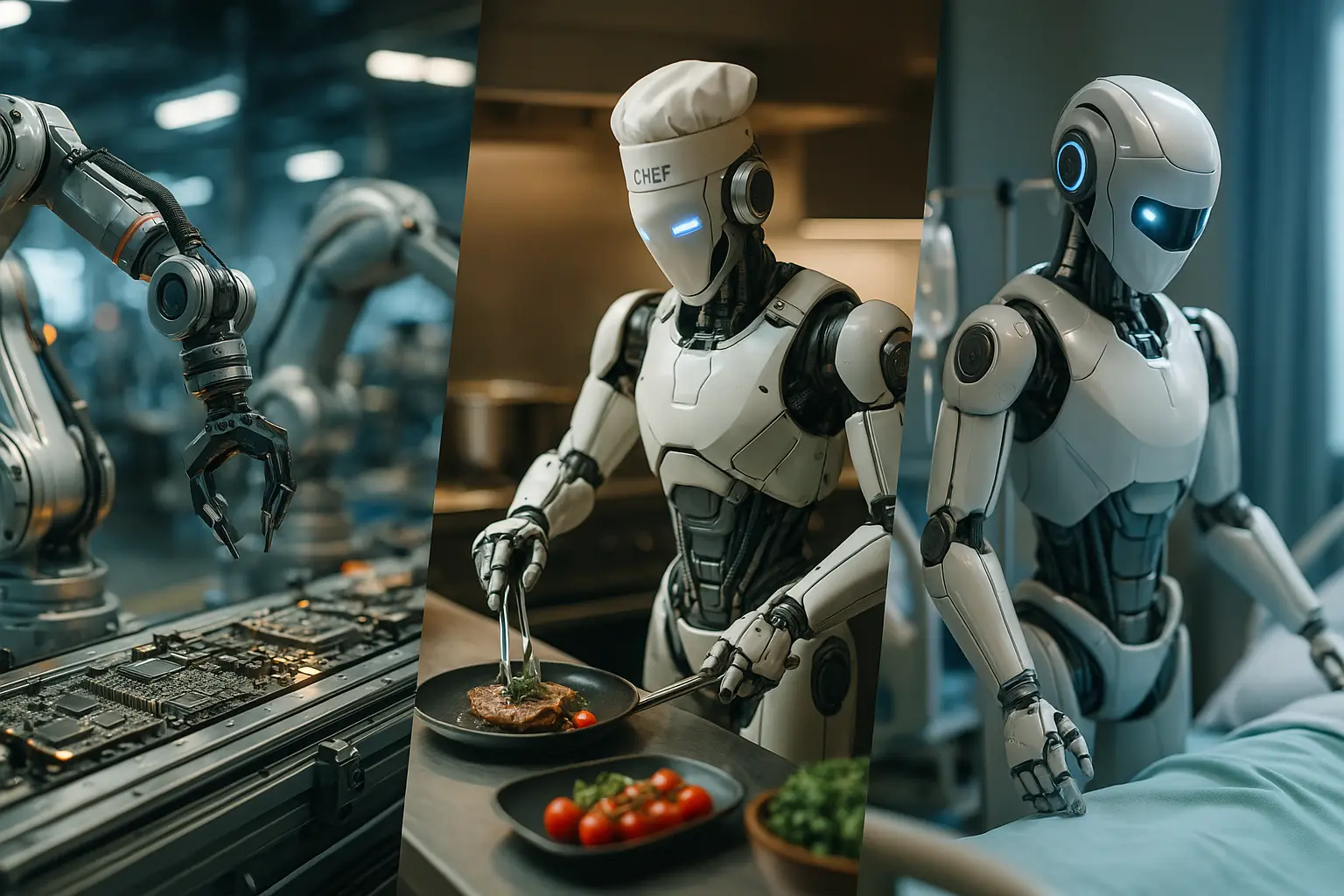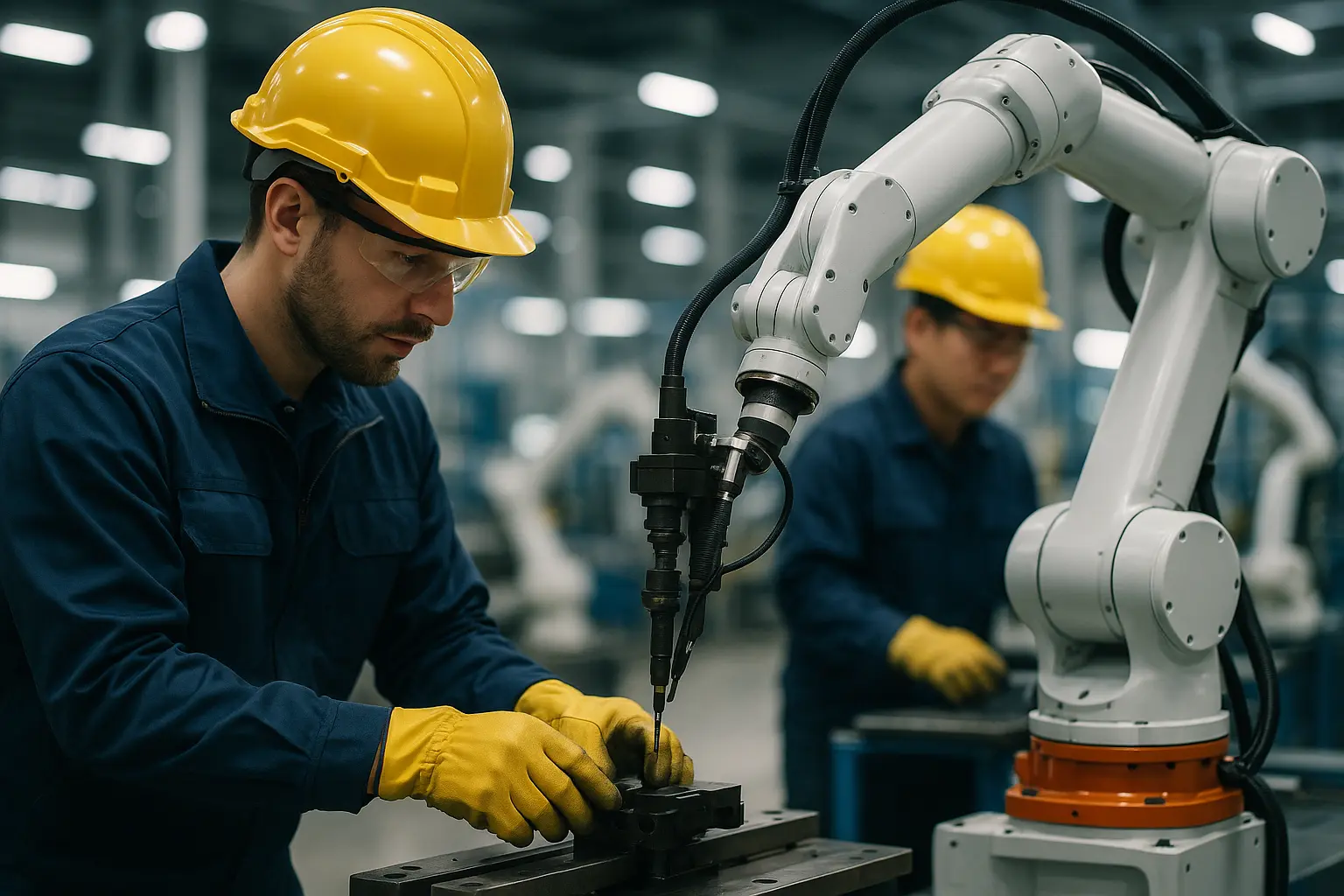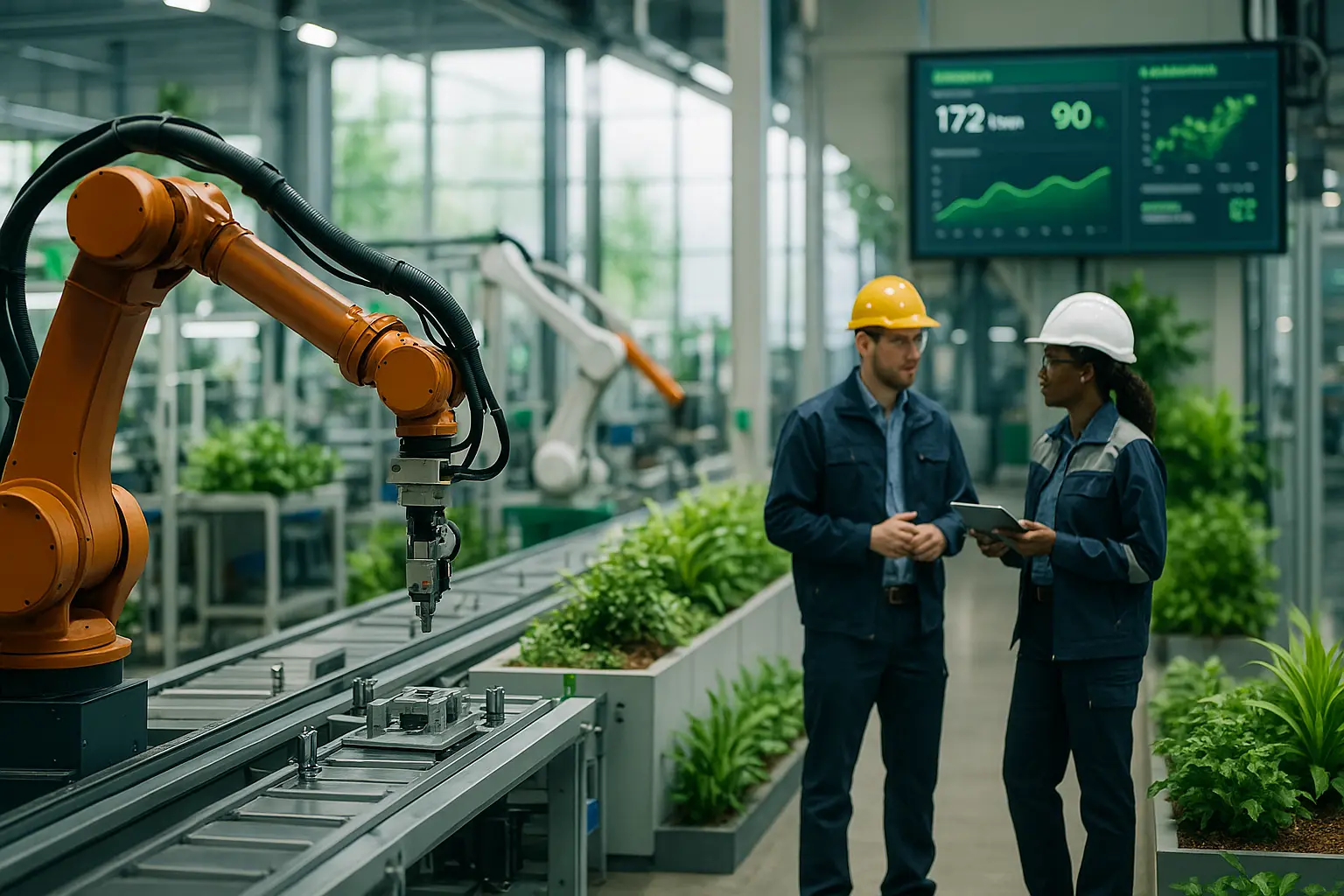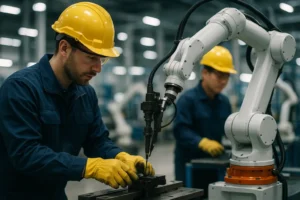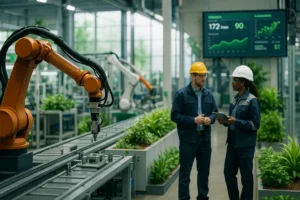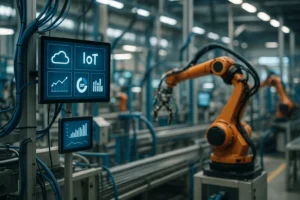How Robots Are Used in Everyday Industries ?
In the digital age, where the marvels of technology continue to transform the way we live and work, one phenomenon stands out—robots. Once, the idea of a robot was relegated to science fiction novels and futuristic films, but today, it’s a pivotal reality in various industries. As we embrace the age of automation, robots have seamlessly woven themselves into the fabric of our daily activities, redefining how we perceive manufacturing and industrial processes. This exploration delves into the transformative role of robotic systems in industries, highlighting the precision, efficiency, and innovation they bring to our world.
The Unsung Heroes of Manufacturing
As we step into modern manufacturing plants, the once vivid image of bustling human workers on assembly lines is evolving. Today, autonomous robots work tirelessly, executing tasks with uncanny precision and skill. These robots are the unsung heroes, enhancing production rates and elevating quality standards in ways previously unimaginable.
In industrial environments, where danger, monotony, and high precision are paramount, robots perform tasks with innate efficiency. They lift, weld, paint, and assemble components at a pace that leaves their human counterparts awe-struck yet relieved. Liberating humans from repetitive drudgery, these machines open opportunities for people to engage in more creative, analytical, and supervisory roles.
The integration of robotics in manufacturing has paved the way for high-quality products, ensuring every piece meets stringent standard checks. Robots equipped with advanced sensors and AI algorithms detect defects faster than the human eye. This not only minimizes waste but also ensures the final output matches the industry’s expectations for quality and consistency.
Moreover, with the rise of smart factories, robots are no longer confined to solitary tasks. Autonomous systems communicate with each other and centralized databases, optimizing operations in real-time. This network of intelligent machines epitomizes the pinnacle of industrial automation, transforming plants into hubs of innovation and efficiency.
Robotic Transformations in the Service Sector
While many associate robots with manufacturing, their influence extends far beyond factory walls. In the service industries, robots are becoming indispensable allies, performing tasks that enhance the user experience while maintaining operational excellence.
In hospitality, for instance, robotic butlers and concierges greet guests, handle luggage, and even perform room service duties with a charming AI-driven demeanor. It’s a blend of human touch and technological prowess, offering patrons a unique, modern experience that traditional methods can’t match.
Healthcare too has embraced the robotic revolution. From surgical robots that execute operations with millimeter precision to autonomous aides assisting nurses and doctors in hospitals, the scope is vast. Such advancements promise safer operations, reduced recovery times, and enhanced patient care, a testament to the harmonious coexistence of human expertise and machine accuracy.
Even in retail, the digital transformation is evident. With the rise of automated checkout systems and robotic inventory management, stores are streamlining operations, reducing human error, and enhancing customer satisfaction. These robots are not only reshaping the way businesses operate but also enriching the human experience, ensuring convenience and efficiency at every turn.
The Ethical Horizon of Robotic Integration
As we navigate the intertwining paths of human endeavors and robotic efficiency, it’s imperative to address the ethical dimensions of this relationship. Robots enhance productivity and precision, yet their rise prompts questions about employment, ethics, and the future of work.
The concern of job displacement is a pivotal topic. While robots perform tasks once filled by humans, this shift also creates new roles focused on managing, programming, and maintaining these robotic systems. Industries are encouraged to invest in retraining programs, ensuring that the workforce remains relevant and empowered in this evolving landscape.
Furthermore, the ethical considerations extend to the quality of work life. With robots taking on repetitive and hazardous tasks, humans can engage in more fulfilling and creative pursuits, cultivating a work culture that values innovation and mental well-being.
There’s also a need for stringent regulations ensuring robots operate within ethical boundaries, emphasizing transparency, accountability, and respect for human rights. This ethical framework is essential for maintaining trust and harmony as robots become more prevalent in our daily lives.
In this space, collaboration between policymakers, industries, and the public is crucial. By creating a shared vision for the future, we can harness the full potential of robotics in a manner that uplifts society, ensuring that the synergy between humans and machines is one of mutual growth and benefit.
A Vision Forward: The Future of Robotics
As we look into the future, the potential for robotic evolution is boundless. With the pace of technological advancement accelerating, the industries of tomorrow will be shaped by innovations we can only begin to imagine today.
Robots are expected to become increasingly autonomous, capable of learning from their environments and adapting to new tasks with minimal human intervention. This will revolutionize sectors such as agriculture, logistics, and even education, where precision and flexibility are key.
Moreover, the integration of robots in personal spaces will see a surge. From household chores to personal assistance, they will become an integral part of our daily routines, enhancing convenience and freeing up time for more human interactions.
The key to this future lies in collaboration. As technology evolves, so must our approach to its integration, ensuring that ethical considerations, quality standards, and societal benefits remain at the forefront. Robots should serve as partners in progress, not replacements, fostering a world where human creativity and robotic precision coexist harmoniously.
In conclusion, while the journey of robotic integration is ongoing, its impact is undeniable. As we stand on the brink of this new era, let’s envision a world where robots are not just tools but companions in our shared quest for a brighter, more innovative tomorrow.
As we delve deeper into the world of robotics, we find ourselves at an exciting crossroads where technology and creativity converge. Robots have transcended the realm of mere tools, evolving into partners that complement our abilities. By embracing this synergy, industries can achieve unprecedented levels of precision, quality, and innovation. The future is one where humans and robots work hand-in-hand, each enhancing the other’s capabilities, driving progress, and enriching lives. Let’s welcome this era with open arms and a shared vision of collaboration and growth.
FAQ
What roles do robots play in manufacturing industries?
Robots are extensively used in manufacturing for tasks such as assembly line work, welding, painting, and packaging. They improve precision, speed up production, and reduce human error.
How are robots utilized in the healthcare sector?
In healthcare, robots assist in surgeries by providing high precision and stability. They are also used for transporting medical supplies within hospitals and assisting in rehabilitation therapies.
In what ways do robots contribute to the agriculture industry?
Robots in agriculture help with planting, harvesting, and monitoring crops. They are equipped with sensors to assess soil health and can operate autonomously to manage large fields efficiently.
How do robots improve operations in the logistics and supply chain industry?
Robots streamline the logistics sector by automating sorting, packing, and inventory management. They enhance efficiency and accuracy in warehouses, reducing the time taken for order fulfillment.
What impact do robots have in the retail industry?
In retail, robots are used for inventory management, customer service, and cleaning tasks. They help keep shelves stocked, provide information to customers, and maintain store hygiene.
